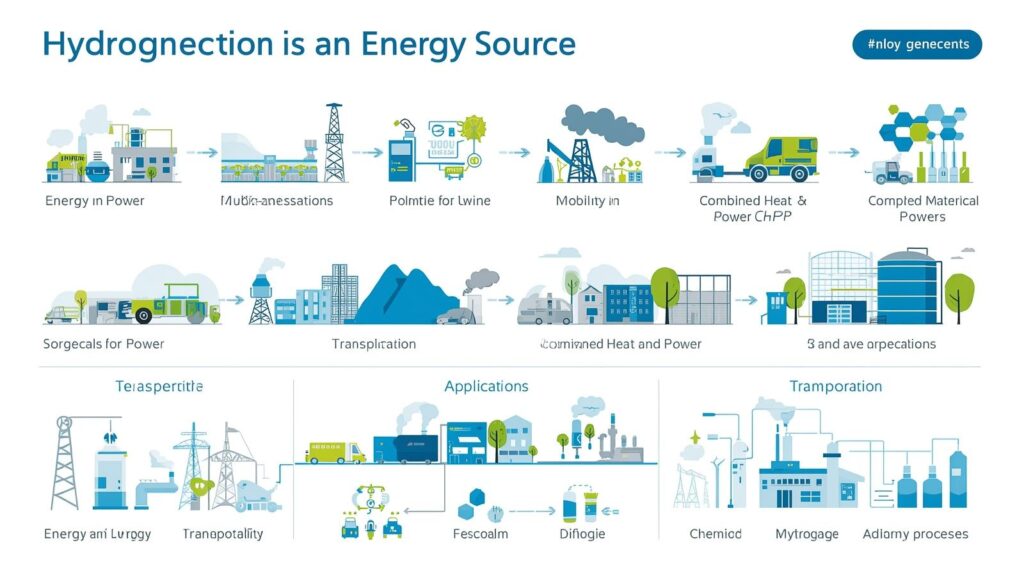The global hydrogen market is undergoing a transformational phase, driven by the rising demand for clean and sustainable energy solutions. With industries and governments across the world shifting toward decarbonization, hydrogen has emerged as a key enabler of the global energy transition. It not only offers a zero-emission alternative for energy generation but also plays a crucial role in industrial applications, transportation, and power storage. By 2030, the hydrogen market is projected to expand significantly, supported by policy frameworks, technological advancements, and large-scale infrastructure development.
Download PDF Brochure @ https://www.marketsandmarkets.com/pdfdownloadNew.asp?id=132975342

Market Size and Growth Outlook
The hydrogen market has seen steady growth over the past decade, with increasing adoption across industries such as refining, chemicals, steel production, and transportation. According to industry estimates, the global hydrogen market is projected to reach USD 312.90 billion by 2030 from USD 225.12 billion in 2025, registering a CAGR of 6.8%. This expansion is fueled by rising investments in green hydrogen projects, declining production costs, and growing government incentives for hydrogen adoption. The transition from grey hydrogen, produced from fossil fuels, to blue and green hydrogen is expected to redefine the market landscape in the coming years.
Market Share Analysis
The current market share is dominated by grey hydrogen, which accounts for the majority of hydrogen produced globally due to its lower cost of production. However, the rising focus on climate change mitigation and strict emission targets are pushing industries toward low-carbon alternatives such as blue hydrogen, produced using carbon capture technologies, and green hydrogen, derived from renewable energy sources through electrolysis. Green hydrogen, in particular, is expected to witness the fastest growth and capture a substantial share of the market by 2030. Regions such as Europe, North America, and Asia-Pacific are at the forefront of hydrogen adoption, with Europe leading in terms of large-scale hydrogen strategies and projects.
Growth Drivers of the Hydrogen Market
Several factors are driving the growth of the global hydrogen market. The most prominent driver is the increasing global emphasis on decarbonization and clean energy transition. Governments worldwide are implementing policies, subsidies, and roadmaps to scale up hydrogen production and usage. Additionally, technological advancements in electrolyzers and fuel cells are making hydrogen more cost-competitive. The growing demand for hydrogen in mobility, particularly in fuel cell electric vehicles (FCEVs), is further expanding its role in the transportation sector. Moreover, hydrogen’s ability to store renewable energy and stabilize grids makes it an essential component of future energy systems. These combined drivers ensure a robust growth trajectory for the hydrogen market toward 2030.
Key Industry Applications
Hydrogen finds applications across diverse industries. In the industrial sector, it is extensively used in refining processes, ammonia production, and steel manufacturing. The transportation sector is witnessing an increasing shift toward hydrogen-powered vehicles, especially for long-haul trucks, buses, and trains, where battery-based solutions face limitations. Hydrogen is also gaining momentum in the power sector, where it serves as a clean fuel for power generation and a storage medium for renewable energy sources such as solar and wind. Additionally, hydrogen is being explored in residential and commercial energy applications, further broadening its scope of adoption.
Regional Insights
Regionally, Europe is leading the global hydrogen market, with ambitious initiatives such as the European Green Deal and the Hydrogen Strategy for a climate-neutral Europe. The region has made significant investments in hydrogen infrastructure, including electrolyzer capacity and hydrogen refueling stations. North America follows closely, with the United States and Canada investing heavily in hydrogen research, development, and deployment projects. In the Asia-Pacific region, countries like Japan, South Korea, and China are aggressively promoting hydrogen adoption to reduce dependence on fossil fuels and achieve carbon neutrality. The Middle East, with its abundant renewable resources, is also emerging as a potential hub for green hydrogen production and export.
Future Opportunities and Challenges
The future of the hydrogen market holds immense opportunities, especially as governments and private players collaborate to build large-scale hydrogen economies. The declining cost of renewable energy and advancements in hydrogen technologies are expected to make green hydrogen commercially viable by 2030. Cross-border hydrogen trade, large-scale industrial decarbonization, and increased adoption in heavy-duty transportation present significant growth opportunities. However, the industry also faces challenges, including high infrastructure costs, lack of standardized regulations, and the need for efficient storage and transportation solutions. Addressing these barriers will be critical to realizing the full potential of hydrogen in the coming decade.